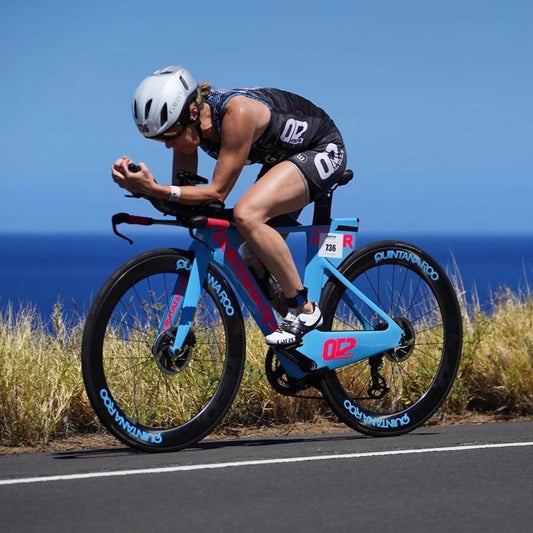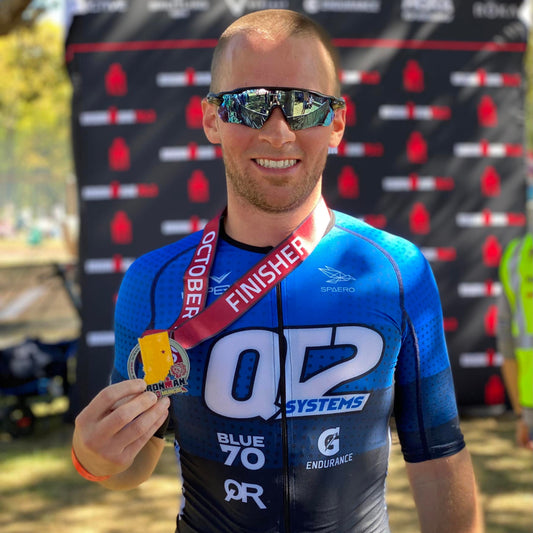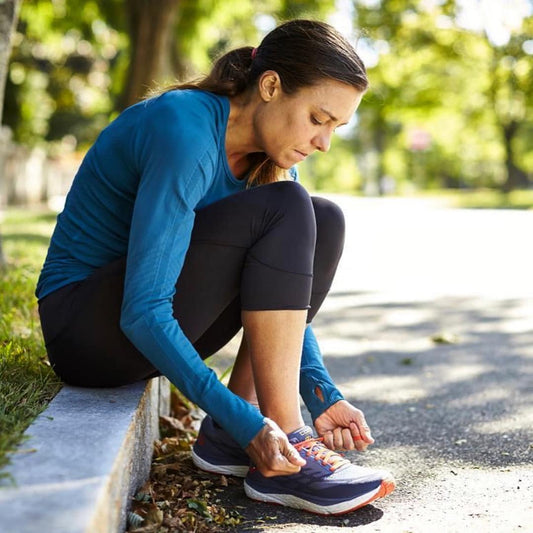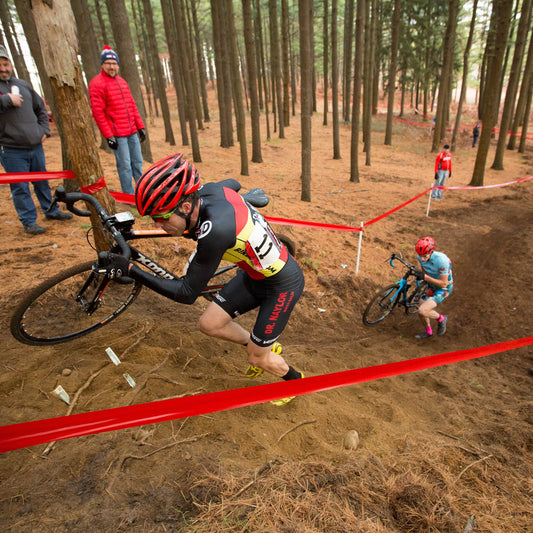Open Water Swim Tips For Training and Racing
“AHH!!! Something just touched my foot!”
“Did you feel that?? What was that??”
“Why did we just swim through a patch of cold (or warm) water? Do you think something was down there?”
“Oh my gosh! This current! It is going to take us three times as long to get back, as it did to get down!”
“This swim course looks really long. It must be more than (insert race distance.)
These are just a FEW of the things I have heard or said in my 16 years of triathlon and open water swimming!
I have swum in water so cold, it felt like the wind was continuously being knocked out of me.
I have done a practice swim in the Tennessee River the day before a race, that whooshed me backwards as I was trying to swim forward, and pushed me past my point of exit, causing a momentary lapse of forgetting what to do to get out, knowing I was going to either drown or be hit by barge! (Hard to think straight, when you think this is the end!)
I have placed myself in a starting position (second row!) of a mass-start Ironman, where I had absolutely no business being, and was kicked so hard during the swim that my eardrum burst. (Yes, I went on to slowly but surely finish that race!)
I have swum during “Red Tide” (if you live in Florida, you know how nasty this is!) among piles and piles of seaweed and some stinky, dead fish.
I have been stung many times over by jellyfish on an open water swim race, cried a little and went onto continue and finish the darned thing.
But guess what I have never seen or encountered during all these years of swimming? A SHARK!
This is the biggest fear for most with salt-water swims, when in fact, it should be the least!
The most important part of any open-water swim, whether training or racing, comes down to proper preparation and execution. Listed below are some areas of importance to add to your swim training.
PRACTICE:
If you are fortunate enough to have an area to swim in open water, then do it! Get comfortable with it. Just be sure to always have a swim buddy! There is nothing that will make you more comfortable with open water swimming, than a lot of practice doing it! If you do not have a place to open swim in your area, then grab some buddies in the pool, and work on bunching up in one lane to become comfortable with being jostled, as well as to practice drafting and passing.
TYPES OF ENTRIES:
• Rolling Starts: This has taken the place of mass starts in most Ironman branded races. This is part of their Swim Safe Initiative and makes swim starts a bit gentler, than those of yester-year! If you are not familiar with this, think of a running race where there are “pace groups” at the start. There will be people holding signs that will list swim times. You will place yourself in the group in which your estimated swim time will be. At the start, you basically just start filing into the water, in the order as to which you are lined up. It is important to be honest in your placement. Put yourself in a group that is too fast, and you will hold others up and get swum on top of. Put yourself in a group that is too slow, and you will feel frustrated, slowed and blocked. (This isn’t really something to “practice” in training, but I wanted to include it here, to explain what it is.)
• Beach Entry: To enter from a beach, you can run, walk, use high knees, or dolphin dives. If this happens to be an ocean or gulf swim, there is usually a current that will pull one way or another. On race day, during your warmup swim, be sure to make note as to which direction the current is going. This will allow you to know whether to line up off to one side or another at the start, so that you aren’t pushed to the wrong side of the buoy line. If you aren’t sure, watch the first few start groups and see where the front of the line people place themselves! If you are a beginner and nervous for the swim, it is ok to line up in the back, let the group go, and walk in slowly to keep your heart rate down a bit.
• In-Water Starts: This type of start will have you treading water until the start gun goes off. During your training become comfortable with treading. On race day, just before the gun goes off, be sure you get into a horizontal position so that you are ready to swim!
• Jumping Off Dock Entry: For this start, you are usually filing down in an almost single file line onto a dock and jumping into the water. Be sure you aren’t jumping on top of another athlete. Some people like to hold their goggles. The fear here, is sinking down too low into the water, but that is more of a fear than a reality. You can bend your knees a bit (think semi-cannonball!) to have a shallower entry.
Breathing:
Breathing in open water is different than in a pool and it is good to practice this. In the pool, you aren’t dealing with waves, chop, sun in your eyes, people bumping into you, etc. Become comfortable with bilateral breathing. You never know which direction waves will be smashing in your face. If you can only breathe on one side, and it happens to be the side of the chop, it is going to be a pretty miserable swim! Also, in swims where there is a lot of chop or waves, you may have to turn your head a bit more versus in a smooth pool swim.
Sighting:
In the pool, we have that boring black line to keep us straight. In the open water, clearly, there isn’t a black line. Be sure to practice sighting during your swim training, even if it is in a pool. It is best to incorporate your sighting into your breathing. Every 3 to 5 strokes, when you take your breath, as you are turning your head peek forward for sighting. Incorporating sighting with your breathing, keeps your stroke more uniform, allows your hips to stay up which in turn keeps your pace up. Pausing and lifting your head to sight, causes your hips to drop and pauses your rhythm, making for a slower swim.
Drafting:
The best position for drafting is the side of another swimmer in the area between their hip and ankles. Second, is less than two feet behind another swimmers’ feet. Just be sure not to tap their feet. This is rude and could land you a swift kick in the face! Drafting will allow you to use less energy and swim a bit faster! Conserve that energy for later in the race!
Exits:
The most important tip here is, DO NOT stand up too soon! Most people are super excited to have the swim leg over and will stand up way too soon! Walking in the water is much slower than swimming. Swim until you feel your hand scrape the bottom a couple of times. At that point you can stand. If you stand before that, then use the dolphin dive to move you forward. If it is a wetsuit swim, be sure to unzip and peel your wetsuit to your waist, before removing goggles and swim cap. Another pointer is to kick a bit more rapidly (but gently) the last 200 to 400 yards. The whole time you have been swimming, most of the blood flow has been in the upper body. The extra kicking will get the blood flow back to the legs and reduce the chance of dizziness when you stand.
FINALLY, IT IS RACE DAY!!! Here are some execution tips to ensure you have a great swim!
• A week or two before my “A” race, I always like to buy a new pair of goggles. I will wear them only once or twice to get the fit right and then put them away until race morning. This ensures that I have a pair of goggles that are crisp, clear and less likely to fog up on me.
• The day before the race, try to do a practice swim at the same time you will be swimming on race day. Notice where the sun is, (which may also help you determine what color/tint of goggles you need) look for landmarks to sight off of, (just in case the sun is in your eyes and you cannot see the buoys well) get a feel for the water temperature, the clarity (or lack thereof) as well as familiarize yourself with the course.
• Pre-Race Visualization. In the days leading into and the morning of the race, visualize yourself lining up for the swim with a quiet confidence and swimming through the water with strong, solid strokes. Imagine this both from your own eyes looking out onto the swim course, as well as you from above, looking down onto the swim course.
• A pre-race warmup is a MUST!!! GET IN THE WATER AND WARMUP! This becomes more important when the water is cold! A high heart rate from pre-race nerves and jumping into cold water without a warmup is a recipe for disaster! The shock of the cold-water mixed w a high heart rate can cause restricted breathing, invoking panic and the feeling of drowning. (Ask me how I know this! Ha!) One tip to calm my pre-race nerves, is during my warm-up swim, I take a moment to look at the sunrise and all of the athletes milling around, and think, “I am lucky to be here and it is going to be a great day!”
• Count the buoys! Be sure you know how many buoys there are! This way, especially if it is a longer swim, you have a sense of how far along you are. You can also use the buoys for a mental trick. Instead of saying, “I have 1.2 miles to swim! UGH! You can say, I only have to get around 6 buoys!”
• Swim Start. Ok, let’s be honest. It doesn’t matter if this is your 1st or 100th race, we are ALL nervous to start the swim, as well as the day! Find comfort in knowing, we are all in this together!
• Suit of Armor! In the first few hundred yards of the swim, I like to pretend I have a suit of armor on and nothing will hurt me. I grit my teeth and go in, KNOWING, I am going to be kicked, punched and elbowed. I know this! I try to imagine I am covered in armor, as well as try to do a “catch-up drill” stroke, keeping my arms out in front to somewhat try to protect my face.
• Fake It Till You Make It! No matter HOW scared, nervous or inferior you are feeling at the swim start, pretend to be the BEST swimmer in the WORLD! Stand tall and proud. Keep your head high, your shoulders back, and stare straight ahead like you are literally going to crush everyone there. Now, chances are you won’t, but at least trick yourself (and others) into believing this!
• During the last few hundred yards, as mentioned earlier in this article, start the rapid but light kicking to get the blood flow back to the legs, while also mentally walking yourself through T1. Thinking through your transition steps one last time before exiting, will ensure you have a methodical and quick transition!
• RANDOM BUT USEFUL FACT! Putting sunscreen on around your eyes, will also cause your goggles to fog, so I avoid sunscreen inside the eye area until after the swim.
Now, go forth and pretend to be a “real” swimmer instead of a “triathlete” swimmer!
This post was written by Coach, Jackie Miller.





